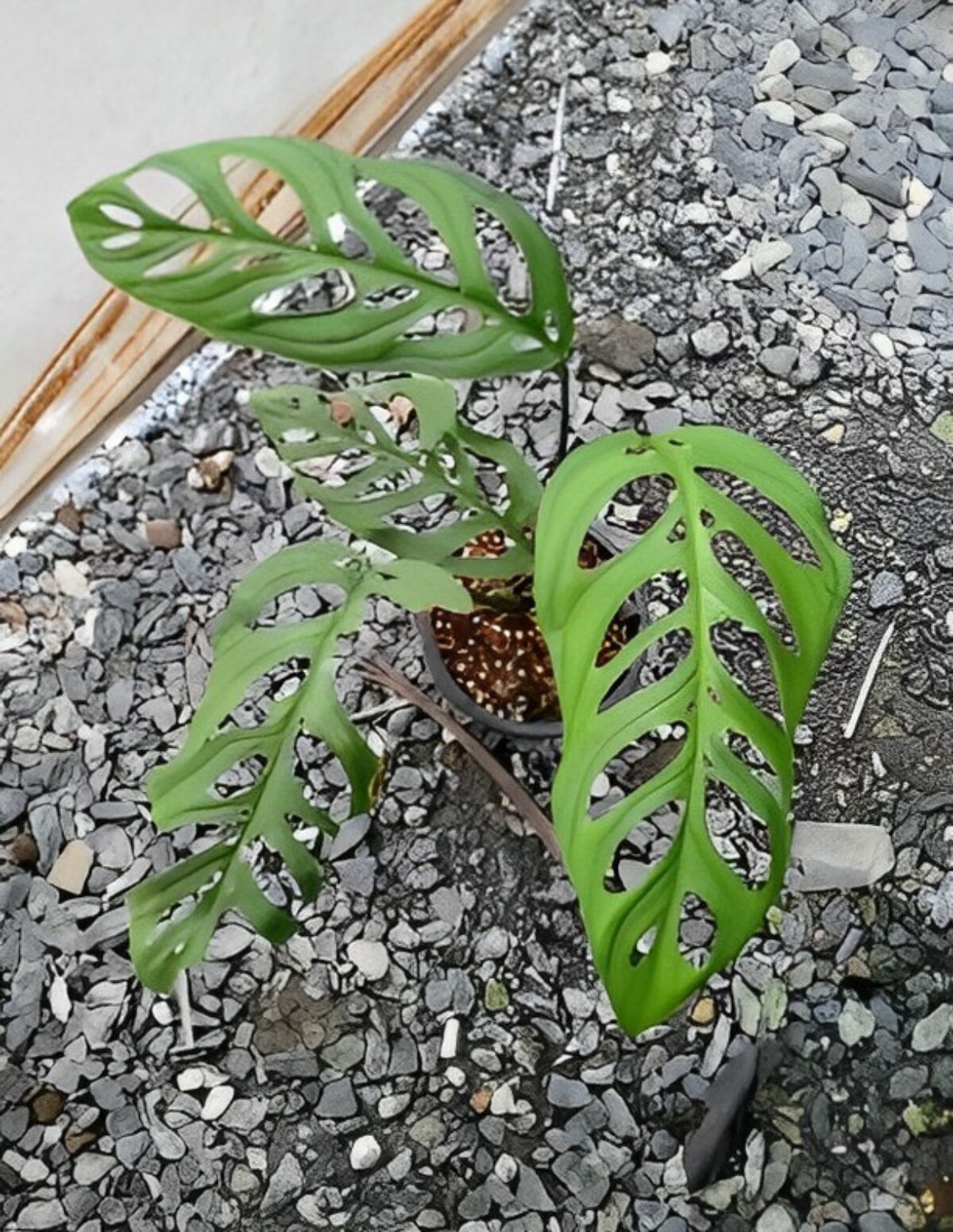If you’re fascinated by plants with dramatic foliage, get ready to meet Monstera Epipremnoides! Often called the “Swiss Cheese Vine” or “Esqueleto” (skeleton in Spanish), this striking aroid is known for its large, heart-shaped leaves adorned with an intricate network of holes and splits. While it has a few specific needs, a little understanding will help you unlock the secrets of this extraordinary plant.

Monstera Epipremnoides Profile
- Scientific Name: Monstera Epipremnoides
- Origin: Native to the tropical rainforests of Central America and parts of South America.
- Fun Facts:
- The ‘esqueleto’ nickname perfectly describes its leaves’ intricate, skeletal appearance.
- It’s a vigorous climber in its natural habitat, producing leaves that can reach several feet in size!
Key Care Requirements
- Light: Thrives in bright, indirect light. Think near an east-facing window or a few feet away from a sunnier window. Some gentle morning or late afternoon sun is fine, but protect it from harsh, direct light.
- Water: Let the top inch or two of its potting mix dry out between waterings. Overwatering is the fastest way to cause problems.
- Soil: A loose, chunky, well-draining mix is crucial. Pre-made aroid mixes work well, or you can create your own with potting soil, orchid bark, and perlite.
- Humidity: Monstera Epipremnoides loves higher humidity (50%+). If your home is dry, a humidifier, regular misting, or a pebble tray are solutions.
- Temperature: Prefers typical household temperatures of 65-85°F. Avoid exposing it to cold drafts or sudden temperature drops.
- Fertilizer: A balanced, diluted liquid fertilizer applied monthly during spring and summer will support growth.
Advanced Tips
- Support: A moss pole, trellis, or similar structure is essential for encouraging those iconic, large, heavily fenestrated leaves.
- Pruning: Prune to control the size of your Esqueleto or to create a bushier appearance. Pruning material is also perfect for propagation!
- Potential for Massive Leaves: [Include an image of a very large, mature Monstera Epipremnoides]. While most won’t reach this size indoors, with the right light and support, yours could produce impressively large leaves over time.
Troubleshooting Common Problems
- Yellowing leaves: Often a sign of overwatering. Check the soil moisture before watering. It could also indicate insufficient light.
- Pests: Your plant may be susceptible to mealybugs, spider mites, and scale. Regularly inspect your plant and treat any infestations promptly.
- Lack of large fenestrations: Ensure your plant is getting enough bright, indirect light and has support to encourage its natural climbing growth habit.
Conclusion
Monstera Epipremnoides is an captivating plant that can become a true centerpiece in your home. With a bit of attention to its key needs, you’ll be rewarded with its extraordinary, skeleton-like leaves for years to come.
Leave a Reply